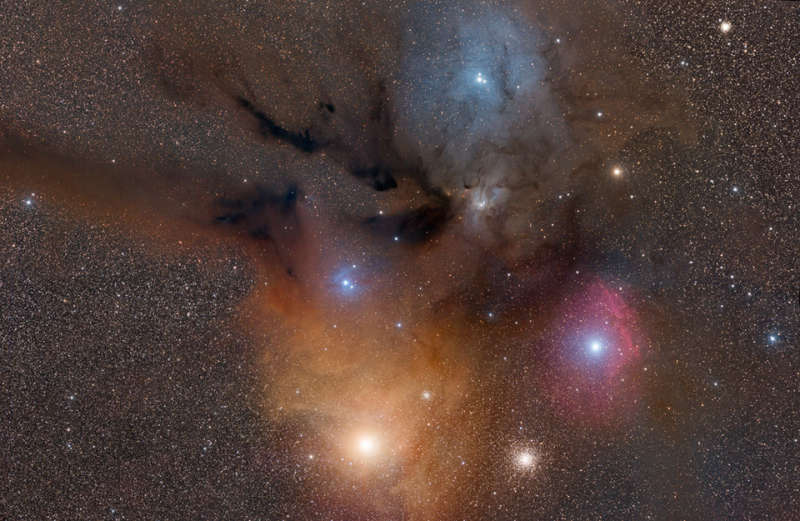
|
Credit & Copyright: Tom O'Donoghue
Explanation:
Why is the sky near
Antares and Rho Ophiuchi so colorful?
The colors result from a mixture of objects and processes.
Fine dust illuminated from the front by starlight produces blue
reflection nebulae.
Gaseous clouds whose atoms are excited by ultraviolet starlight produce
reddish emission nebulae.
Backlit dust clouds block starlight and so
appear dark.
Antares,
a red supergiant and one of the brighter stars in the night sky,
lights up the yellow-red clouds on the lower center.
Rho Ophiuchi
lies at the center of the blue nebula near the top.
The distant globular cluster
M4 is visible just to the right of
Antares,
and to the lower left of the red cloud engulfing Sigma Scorpii.
These star clouds are even more
colorful than humans can see,
emitting light across the electromagnetic spectrum.
|
January February March April May June July August September October November December |
| ||||||||||||||||||||||||||||||||||||||||||||||||
NASA Web Site Statements, Warnings, and Disclaimers
NASA Official: Jay Norris. Specific rights apply.
A service of: LHEA at NASA / GSFC
& Michigan Tech. U.
Based on Astronomy Picture
Of the Day
Publications with keywords: Antares - nebula
Publications with words: Antares - nebula
See also:
